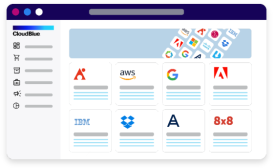Telco AI, also known as Telecom AI or Telecommunications AI, refers to the use of artificial intelligence technologies within the telecommunications industry to improve network management, customer service, and service delivery.
This AI-driven approach leverages machine learning (ML) and advanced data analytics to optimize network operations, predict and prevent issues, and deliver a more personalized customer experience.
With AI-powered software as a service (SaaS) platforms, telecom providers can enhance their offerings, reduce operational costs, and drive a competitive edge in the market. By using tools like generative AI, which can automate responses and analyze customer feedback in real time, Telco AI provides telecom companies with innovative ways to handle large volumes of data efficiently and improve service quality.
Telecommunications AI is critical in a market where networks are more complex than ever, with an increasing number of connected devices and growing demands on data traffic. AI in telecommunications can monitor these intricate networks in real time, detect anomalies, and suggest or even implement corrective actions autonomously. This proactive, AI-powered management helps telecom companies maintain high levels of service reliability and customer satisfaction, transforming AI from a trend to an essential part of telecom infrastructure.
Telco AI Use Cases
AI for telecommunications spans a wide range of applications, each aimed at streamlining operations and delivering better service. One key use case is network optimization, where AI-driven algorithms analyze vast amounts of network data to spot issues before they impact customers. For example, machine learning algorithms can identify patterns in data traffic and adjust network resources to avoid congestion during peak times, improving the overall user experience. AI-driven customer service is another common use case, where chatbots and virtual assistants powered by generative AI handle routine inquiries and troubleshooting, saving time for human agents and providing faster responses to customers.
Another valuable use case is fraud detection. Telecom providers can leverage AI-powered software to monitor transactions and detect irregularities in real-time, effectively reducing fraudulent activities. Predictive maintenance is also a major focus for Telco AI, where machine learning models analyze network equipment to predict failures before they occur, minimizing downtime and extending the lifespan of infrastructure. In each of these cases, AI’s role is to streamline complex processes, making them more efficient and reliable.
The Future of AI-Powered Telecommunications
The adoption of AI-powered solutions in telecommunications is growing rapidly, with many industry experts viewing Telco AI as a must-have to meet modern demands. As the market continues to evolve, advancements in AI are paving the way for even more intelligent, automated telecom services. AI platforms are increasingly being integrated into telecommunications systems, enabling smarter resource management and more responsive customer interactions. The rise of generative AI also points toward an era where telecom companies can provide real-time solutions and highly personalized services at scale.
With AI and ML advancing, telecom providers will likely see new tools emerge that help them stay competitive in a fast-changing market. From enhancing customer experiences to improving network efficiencies, Telco AI is set to become an indispensable part of the telecommunications landscape. Its ability to transform data into actionable insights is reshaping how telecom companies approach everything from customer service to network optimization, making it an exciting field with vast potential for innovation.













